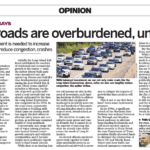The following was published exclusively on The Foggiest Idea on March 29th, 2019. Want to support The Foggiest Idea’s award-winning coverage of the issues that matter? Click here.
By Richard Murdocco
In 1961, John F. Kennedy was president, a gallon of gas cost $0.31, and the Berlin Wall was going up.
Meanwhile, on Long Island, Smithtown was developing rapidly and looking to chart its own future. Then a frontier of rural and suburban life, the township was putting the finishing touches on its first comprehensive plan in an effort to curb its own explosive growth.

Pictured: An aerial view of a Smithtown neighborhood in 1962, a year after the Town of Smithtown first adopted their current comprehensive plan. Source: Suffolk County
What it crafted still remains formally in place. A document intended to shape the future of Smithtown is now 58 years old. For perspective, the best comprehensive plans for any given area usually have a shelf life of only 20 to 30 years, depending on the ambition of the policymakers and the quality of the planning.
So now, with the help of a private consultant, a dash of public input, and the backing of political leaders, Smithtown is going all-in to finally update its comprehensive plan.
But there’s a catch: The town is doing all this for the second time in just a few years.
In 2015, Smithtown planners polished off a massive draft that went nowhere because the town board declined to formally adopt it.
At this point, nobody can deny that an update is critically overdue. As other municipalities have worked to move forward, Smithtown has lagged behind. Their woefully ineffective approach has made them far less competitive than other towns on the Island, and political leaders are fed up with the economic stagnation.
The existing plan may have something to do with it. Its ambitions may have looked great—a half-century ago. There’s a proposal for a bridge across the Nissequogue River and for other roadways that were never built. It refers to schools and community facilities that have long since closed or been demolished. It has other elements that are simply not feasible. As the decades wore on, Smithtown only became more reactionary in its approach towards development.
Dr. Lee Koppelman, a former regional planner for Nassau and Suffolk counties who is now the executive director of the Center for Regional Policy Studies at Stony Brook University, says the town’s push to update its strategic roadmap is caused by the pressing need to meet these overdue demands as well as the new political winds blowing in the township. Long Island’s longest serving town supervisor, Pat Vecchio, was finally voted out in 2017. He’d been in office for 40 years.
“Demographic change certainly has had an impact,” the veteran planner told The Foggiest Idea. “You had a supervisor for life, and if three people in a civic group opposed something, he opposed it as well.”
As he sees it, political change was a long time coming.
“Planning, is a continuous process,” said Koppelman. “If you don’t keep it up to date, it’s useless. The town finally realized they need to get into the 21st century.”
To find out why the 2015 document was never adopted, a look at the builders’ tepid response after this new plan’s debut may offer some insight. For these special interests, the proposal simply wasn’t ambitious or development-friendly enough. Backers of the document had simply argued that the town has no room left to grow. Enough already.
“Led by a supervisor who’s held the top office since 1978,” Long Island Business News’ David Winzelberg wrote in June 2015, “Smithtown seems content to hold onto its status quo: a bedroom community of little diversity, inadequate infrastructure and underperforming business districts.”
Winzelberg condemned the document in no uncertain terms: “an uninspiring land-use plan that calls multifamily housing an ‘unwanted’ use, putting it in the same category as strip clubs and garbage plants.”
Clearly, Winzelberg was merely echoing the tone of his sources—both business groups and developers—who reportedly felt that the proposed road map “falls woefully short of properly addressing downtown development and the area’s increasing exodus of young people. The draft plan from the town’s planning department asserts that the intensity and scale, of uses like multifamily rental housing, which other municipalities are creating to help retain young talent, should be controlled. ”
Perhaps what really did that plan in was the unflattering truth it spoke. Regarding multifamily housing, the darling of builders and business interests alike for the last 20 or so years, the 2015 document stated that such land uses “tend to be unwanted by residents and surrounding property owners.”
Harsh.
In a sense, the 2015 document and its conservative, maintain-the-status-quo findings represented the old guard of Smithtown’s politics. Vecchio’s firm grip on the town finally loosened after he lost an achingly close Republican primary contest to Town Councilman Edward Wehrheim, now the current supervisor.
By that point, the writing was on the wall for both Vecchio and his overall approach to development. As Newsday wrote, “Discontent grew among many Republicans who became frustrated as villages from Mineola to Patchogue added chic shops and apartments while some Smithtown storefronts went dark.” Vecchio—and the 2015 draft plan that captured his outmoded philosophy on growth—was out. After more than 50 years, the new ways are finally in.

Pictured: Smithtown’s Town Hall Building, named after longtime supervisor Patrick Vecchio. Vecchio served a record 40-years in office.
“Over his 40 years, he did a good job of keeping Smithtown fiscally healthy,” Wehrheim said about his predecessor. “I think the last five years or so, there was more emphasis on keeping that bond rating high and having no debt, and we didn’t do much investing in the municipality.”
Consequently, in October 2018, the town board approved a $490,000 contract to start work on the latest plan by using Melville-based H2M architects+engineers. When the contract was finalized, politicos cheered.
“It will illustrate to us the needs of the community,” Town Supervisor Edward Wehrheim told Newsday. “This will give us a good road map on where we should concentrate funding and the most economic way to spend it.”
Peter Hans, Smithtown’s planning director, is happy to see things finally moving ahead. “I do not know why our plan waited so long for an update,” he told TFI. Hans said that the latest iteration would incorporate relevant recommendations from the aborted 2015 effort.
Hans, who took over as head of the department after a unanimous vote by the Town Board in August 2018, is no stranger to Smithtown’s cautious ways. The longtime planner grew up in St. James, first started working in the planning department in 1992 as an intern, and lives in Nesconset.
“The town became too busy reacting to the day-to-day applications,” Hans said. “Some felt that there wasn’t a need for a plan as the town was fairly developed and changes weren’t needed.” The price of a new plan may have been a factor as well.
“After 40 years, Smithtown elected a new Town Supervisor and the new administration has pledged that it is time that a new plan be developed,” Hans said. “Political pressure to update the plan probably also contributed to this update as it was a regular campaign issue.” He said he welcomed the support his planning department has received.
So far, three community workshops have been productive, Hans told TFI, as residents and businesses call for more open space, traffic improvements, and the like.
“The areas of town are different from one another,” he noted, “and we would expect the issues in Kings Park and St. James to be vastly different from those of Nesconset, Hauppauge and Commack.”

Pictured: This sign has been welcoming shoppers to the Mayfair Shopping Center since the early 1950’s. (Source: Richard Murdocco)
According to Hans, the consensus from residents was that Main Street in Smithtown needs sewers, while Nesconset area sought to alleviate traffic, create a more downtown-esque area for their hamlet, as well as having the town purchase more open space and recreational areas. In Hauppauge, many of the businesses in the sprawling industrial park requested fitness trails and increased services, while some mentioned workforce housing. On that particular request, both the Hauppauge Industrial Association, a lobbying group for the industrial park’s tenants, and the Regional Plan Association, a non-profit planning advocacy group based in Manhattan, are completing a strategic road map that would eventually be incorporated into the town’s master plan.
As of now, St. James and Kings Park, two areas targeted by New York State for sewer funding, are next on the docket for public sessions.
Will this document surpass the 2015 effort? Time will tell.
Asked about the merits of Smithtown’s latest effort, Koppelman said with a laugh, “It depends on what they include in the update. I’m just glad they’re finally talking about it!”
After more than half a century, maybe Smithtown will finally get it right. It’s about time.
Richard Murdocco is an award-winning columnist and adjunct professor in Stony Brook University’s public policy graduate program. He regularly writes and speaks about Long Island’s real estate development issues. You can email Murdocco at Rich@TheFoggiestIdea.org.












‘Sewers’…the double edged sword. Unfortunately it promotes ‘density’, a surreal but natural phenomenon and a builder’s ‘wet dream’. Is that what we need ? More density and how much is too much. Is that an improvement ? The roadways will not sustain the traffic. Oh… I forgot we can just ‘tweak’ some traffic lights. I’ve heard it all. Will Eminent Domain be used ?